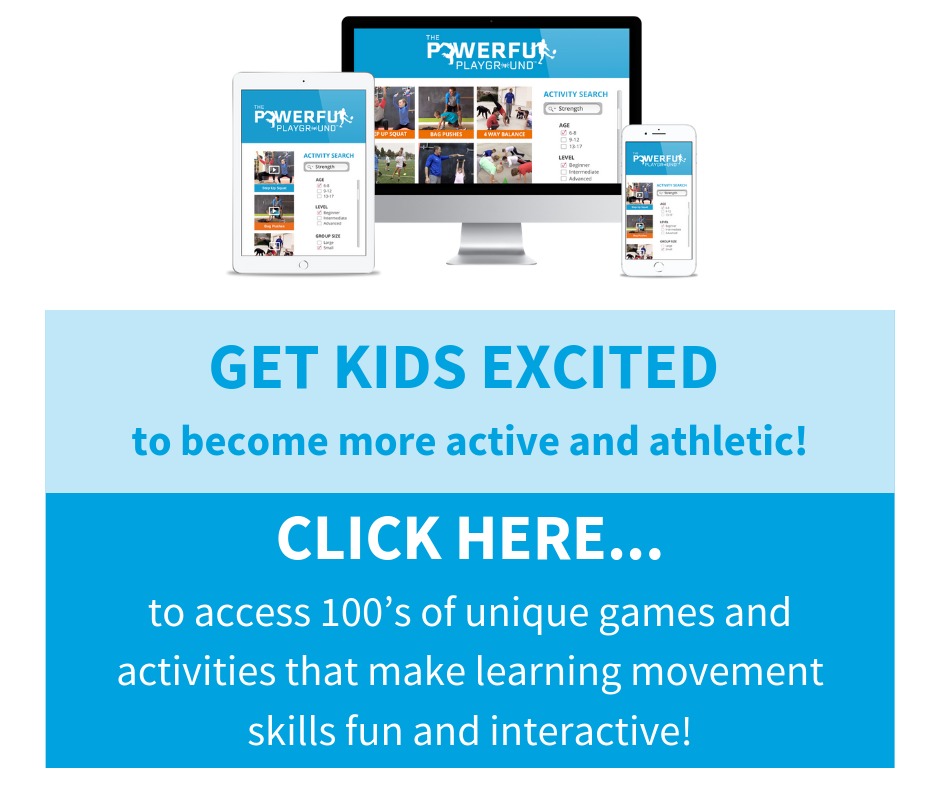By Craig Valency, MA, CSCS
When I was in PE class in junior high and we cycled around to the soccer unit, I dreaded it. I ran around the field, never in position, tripping over my own feet, bumping into other kids and unable to successfully dribble the ball more than two feet without losing it or falling.
 Basically, I was being thrust into the most advanced form of physical activity. I had to have perfect rhythm, timing, spatial awareness, and visual acuity. Instead of developing movement skills, getting fit, and learning to love movement for life. I was figuring out how to get out of ever having to embarrass myself again!
Basically, I was being thrust into the most advanced form of physical activity. I had to have perfect rhythm, timing, spatial awareness, and visual acuity. Instead of developing movement skills, getting fit, and learning to love movement for life. I was figuring out how to get out of ever having to embarrass myself again!
It would be like having kids read Moby Dick before they know all the sounds of the letters or parts of speech. If we want them to develop basic literacy, we always start with the basics. Then, hopefully, kids develop a love of reading for a lifetime.
So it is with movement!
If we want kids to enjoy movement and exercise for a lifetime they must develop physical literacy by first learning the parts of movement, the sensory awareness skills, before putting them together in complex games requiring elite level timing, coordination, reaction, and agility.
The true definition of agility is being able to quickly change direction in response to a stimulus. This means there has to be an element of unpredictability or reaction.
So before we get kids ready for sports or games that require agility, we have to first develop their ability to quickly change direction with a good sense of rhythm and timing. This is known as change of direction speed, or CODS.
Cones, ladders, hurdles, and jump ropes are great tools to work on this. No equipment? No problem, simply have kids do basic locomotion patterns such as crawling, marching, skipping, galloping, and shuffling.
 Start with simple even timing with cone, hurdle, jump rope, or locomotion drills. To improve the link from sound to body movements have the kids sing the rhythm, while moving. This is one of the reasons jump rope songs are so popular. For a ladder drill for instance, they could say, “in, in, out, out” or “right, 2, 3, left, 2, 3” etc. To increase rhythmic awareness point out that some beats are divided into 4 parts or 3 parts.
Start with simple even timing with cone, hurdle, jump rope, or locomotion drills. To improve the link from sound to body movements have the kids sing the rhythm, while moving. This is one of the reasons jump rope songs are so popular. For a ladder drill for instance, they could say, “in, in, out, out” or “right, 2, 3, left, 2, 3” etc. To increase rhythmic awareness point out that some beats are divided into 4 parts or 3 parts.
Because sports, and life, do not always happen in a perfect, even, rhythm, it also important to practice moving to irregular patterns or rhythms. Try spacing out cones unevenly or having kids skip, crawl, or dance to your hand claps and vary your tempos or syncopate the beats.
Temporal awareness is the sense of timing or rhythm that is needed to smoothly and effectively accomplish any physical task. The good news is that practicing these rhythm drills also directly translates to better brain development and mental processing and learning.
So remember, first basic even rhythms, then uneven, irregular patterns and rhythms, then reactive agility, and finally go out and play some soccer!
What are you doing to get kids feeling the rhythm? We’d love to hear your strategies for improving rhythm and timing, or how you might adapt a game or drill you presently use to develop temporal awareness.
Craig Valency, MA, CSCS, president and co-founder of SPIDERfit, has been a personal trainer for the last 11 years. He is currently working at Fitness Quest 10 in San Diego, an elite personal training and athletic conditioning facility. He specializes in youth strength and conditioning programs that promote physical literacy, injury prevention and optimal performance. Along with training youths from 6 to 18 years of age for general fitness, Craig has also worked with some of the top junior tennis players in the world. He has been a physical education consultant for the Stevens Point school district in Wisconsin for the last 3 years, helping revamp the district wide programming for the K-12 PE curriculum. Craig earned his bachelor degree from UCLA, and Masters Degree in Kinesiology from San Diego State University.





Connect with SPIDERfit!